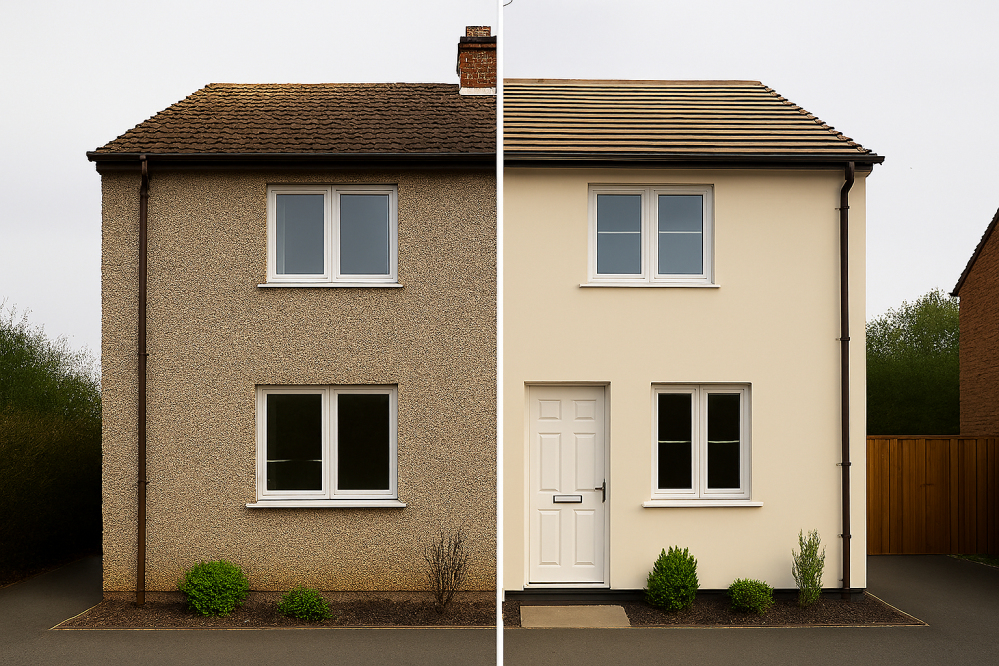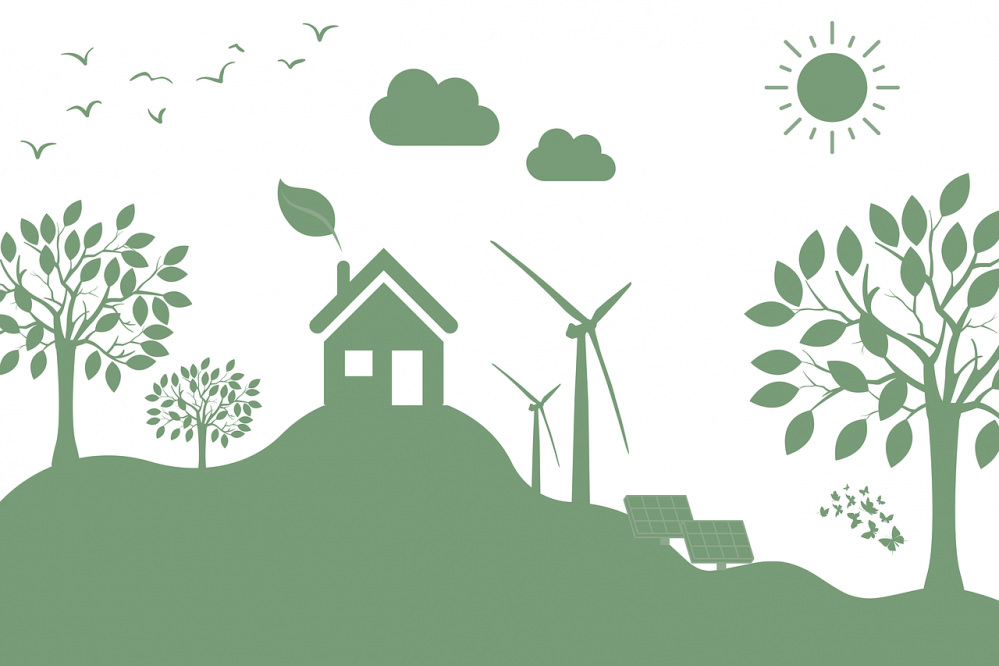Why External Wall Insulation is the Smart Upgrade for Your Home?
What Is External Wall Insulation (EWI)?
External wall insulation (EWI) is a high‑performance system that involves fixing a layer of insulating material to the outside of a building, then sealing it with a protective, decorative render or cladding. This creates a continuous thermal barrier that helps retain heat in winter and keep interiors cooler in summer — one of the most effective ways to improve a building’s energy efficiency without reducing any internal space.
EWI is particularly valuable for older properties with solid walls, which lose heat more quickly than modern cavity walls. By wrapping the building in insulation and finishing it with a durable, weather‑resistant render, EWI not only boosts thermal performance but also transforms the property’s exterior with a fresh, modern or traditional look.

How Does External Wall Insulation Work?
External wall insulation (EWI) works by creating a continuous thermal envelope around the building. A layer of high‑performance insulation — such as expanded polystyrene (EPS), mineral wool, or phenolic foam — is fixed to the outside of the property’s walls. This is then covered with a reinforced basecoat and finished with a durable decorative render or cladding, which protects the system from weather and gives the building a fresh, modern appearance.
By wrapping the building in this insulating layer, EWI significantly reduces heat loss through the walls. This keeps interiors warmer in winter and cooler in summer, lowering the need for heating and cooling systems and helping to cut energy bills.
Additional benefits of EWI:
Eliminates cold spots and draughts inside the home
Protects the building fabric from rain, frost, and UV damage
Improves airtightness without compromising breathability
Reduces condensation and damp on internal walls
Enhances sound insulation, making interiors quieter and more comfortable
Minimal disruption during installation — no loss of internal space, ideal for both occupied homes and large‑scale developments
Key Benefits of EWI
- Lower Energy Bills – Significantly reduce heat loss through walls and cut your heating costs.
- Improved Comfort – Maintain a stable indoor temperature all year, keeping rooms warmer in winter and cooler in summer.
- Modern Appearance – Upgrade your property’s exterior with a choice of durable render finishes, colours, and textures
- Noise Reduction – Insulated walls help block out external noise, creating a quieter, more peaceful interior.
- Weather Protection – Shield your building from rain, frost, wind, and UV damage, extending its lifespan.
- Supports Decarbonisation – Lower your carbon footprint and contribute to a greener, more sustainable future.
What About Fire Safety?
Fire safety is a critical factor when selecting an external wall insulation (EWI) system. In the UK, two main types of insulation boards are commonly used, each suited to different building types and fire safety requirements:
1. Expanded Polystyrene (EPS) Insulation
EPS is a popular choice for buildings below 18 metres in height. It offers excellent thermal performance and is cost‑effective, making it ideal for residential homes and low‑rise developments. To meet fire safety standards, EPS systems are installed with non‑combustible fire breaks at key points — such as around windows and between floors — to help prevent the spread of fire.
2. Mineral Wool Insulation
For taller buildings or higher‑risk properties, non‑combustible mineral wool insulation is often specified. Rated Euroclass A1 — the highest fire resistance classification — mineral wool provides maximum fire protection and is frequently required by building regulations for high‑rise or sensitive projects. While it is more expensive and slightly less thermally efficient than EPS, mineral wool systems deliver exceptional safety. To match the thermal performance of EPS, they typically require thicker insulation layers.
So why to install externall wall insulation to your house?
One of the main reasons property owners choose external wall insulation is to save on energy bills. By insulating your external walls, you can dramatically reduce heat loss, keeping interiors warmer in winter and cooler in summer.
Studies and industry data show that EWI can cut monthly heating costs by up to 40%, particularly in older homes with solid walls and poor thermal performance. This makes it one of the most effective energy‑saving upgrades available — delivering comfort, lower running costs, and a fresh new look for your property.

Improve the Appearance of Your Home!
Transform an older property into a warm, stylish, and modern home with external wall insulation (EWI). In addition to boosting energy efficiency, EWI enhances the exterior finish, giving your building a fresh, updated look that reflects your style.
A professionally installed EWI system can:
Increase kerb appeal — make your property stand out in the street
Add market value — energy‑efficient homes attract buyers and higher offers
Offer design flexibility — choose from a wide range of colours, textures, and render styles
Protect and refresh — weather‑resistant finishes keep your home looking great for years
Whether you prefer a sleek contemporary façade or a traditional aesthetic, EWI provides the perfect combination of performance and visual impact — turning dated homes into attractive, future‑ready living spaces.
.

Reduce Your Carbon Footprint
Installing External Wall Insulation (EWI) is a smart step toward a more sustainable future. By improving your home's energy efficiency, you'll use less fuel to heat your property—helping to lower greenhouse gas emissions and reduce your environmental impact. It's a practical way to make your home greener while contributing to a cleaner planet.
Plus, it can help protect your home from potential future carbon taxes, making it a forward-thinking investment in both sustainability and financial security.




